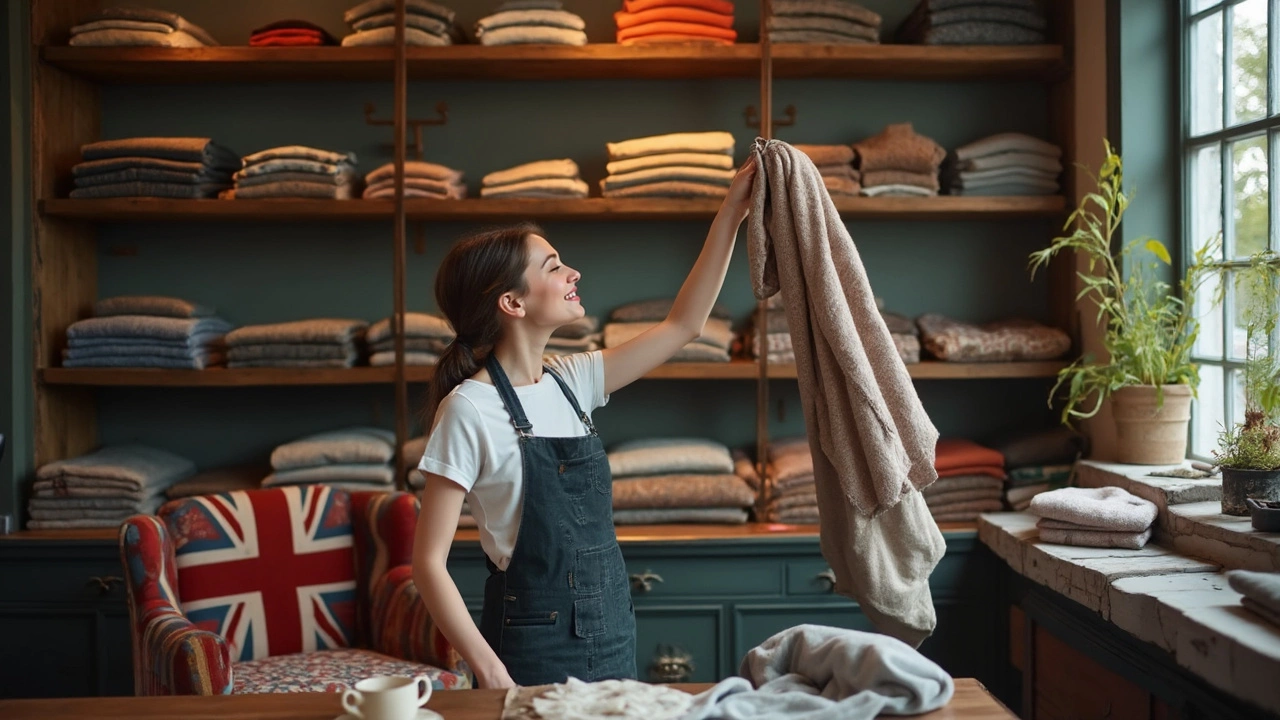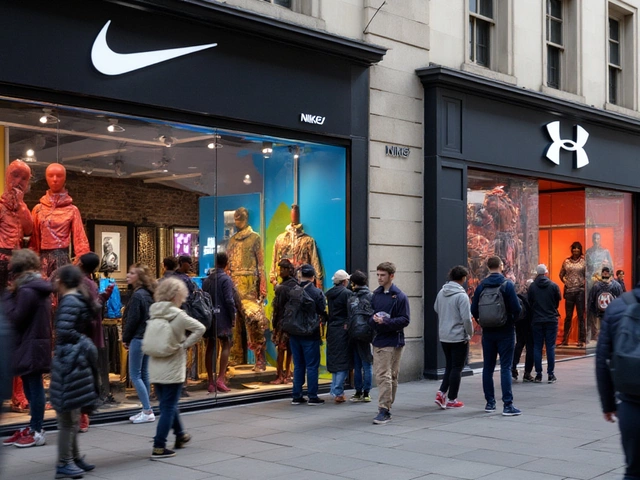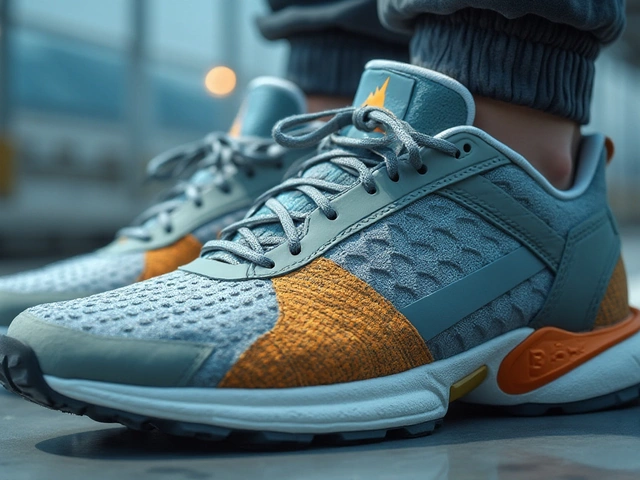Ever find yourself stuck between two t-shirts, unsure which one will go the distance? We've all been there. A good quality t-shirt is like a great friend—it lasts, looks good, and always feels right. But picking one isn't as simple as it seems. So, where should you start looking?
First up, the fabric. Most experts will tell you to look for 100% cotton if you want a soft, breathable feel. But don't sleep on blends; they can offer more durability and stretch. Ever tried a tri-blend? It can be a game-changer for those seeking comfort and longevity over multiple washes.
Fabric Essentials
When it comes to choosing a good t-shirt, fabric is king. You might think all t-shirts are the same, but dive deeper, and you'll find there's a world of difference. Let's break it down.
Cotton: The Classic Choice
Most folks swear by 100% cotton for its softness and breathability. Cotton is your go-to if you want something light and comfy for everyday wear. It's natural, it feels great on the skin, and it's usually everyone's first pick.
But hang on, not all cotton is cut from the same cloth. Look for terms like "ring-spun" or "combed." Ring-spun cotton has longer fibers twisted together, making the fabric stronger and softer. Combed cotton, on the other hand, has been brushed to remove impurities, giving it that extra smooth touch.
Blends and Why They Matter
Cotton-polyester blends can sometimes get a bad rap, but don't let that fool you. A little polyester in the mix can make a t-shirt last longer and hold its shape after washing. Plus, they dry quicker, which is a bonus if you're always on the go.
Then there's the new favorite: the tri-blend. It's a mix of cotton, polyester, and rayon. The result? A fabric that drapes nicely and has a vintage softness to it. If you want a shirt that's both practical and stylish, a tri-blend might be your best bet.
Eco-Friendly Options
Feeling green? Check out organic cotton or bamboo fabric. Organic cotton skips the pesticides, which is better for both you and the planet. Bamboo, surprisingly, is super soft and has natural moisture-wicking properties, making it a great choice for gym days.
| Fabric Type | Main Benefits |
|---|---|
| 100% Cotton | Soft, breathable, hypoallergenic |
| Polyester Blends | Durable, shape-retaining, quick-drying |
| Tri-Blend | Soft, drapes well, vintage look |
| Organic Cotton | Eco-friendly, pesticide-free |
| Bamboo | Soft, moisture-wicking, sustainable |
So next time you're out shirt shopping, remember the fabric you choose isn't just about comfort—it also determines durability, style, and even its environmental footprint. Take a little time to check those tags, and your t-shirts will likely last longer and feel much better. Trust me, your wardrobe will thank you.
Importance of Stitching
Ever felt like your t-shirt has a vendetta against your comfort? It might be because the stitching is all wrong. Yeah, stitching isn't the first thing that comes to mind when buying a t-shirt, but it's super important.
First, check the seams. A well-stitched t-shirt will have tight, even stitches that lay flat. If you see a lot of loose threads or uneven lines, that's a sign it won't hold up well after a few washes. Your aim should always be small stitches; they mean the fabric holds together better and won't unravel easily. Some folks say 10 to 12 stitches per inch on a shirt are golden standards for good quality.
Double Stitching
Double stitching at the sleeves and hem? That's like the security alarm for your shirt's longevity. This extra line of defense ensures your shirt won't face a fatal blow from an unexpected tear or heavy wear at key points.
Neckline and Shoulder Seams
Also, pay attention to the neckline and shoulder seams. A good quality t-shirt will have reinforced seams in these areas, adding extra strength and preventing slouchy shirts days. These areas see the most stress, so they’re crucial in determining the overall durability of your shirt.
Bottom line, taking a minute to assess the stitching could save you from spending your hard-earned cash on t-shirts that barely weather a few wears. It's the small details that count.

Perfect Fit
A t-shirt's fit can make or break your look. You don't want to be that guy with a shirt so tight it could burst or so loose you get lost in it. So, how do you find that sweet spot?
Understanding T-Shirt Fits
Most t-shirts come in three basic fits: slim, regular, and relaxed. The slim fit is snug, emphasizing the body. Ideal if you're looking for a sharper, more tailored look. Regular fit is what you might call the 'classic'. It's comfortable without being overly baggy and suits most body types. Lastly, the relaxed fit has that laid-back vibe, perfect for casual or lazy days.
Measuring Up Right
Let's get practical: sizing. You'll often see S, M, L, and XL, but don't let those letters fool you. Different brands have different dimensions for these sizes. Time to measure: get a tape and measure your chest, waist, and length. Compare these to a brand’s size chart, which you can usually find online.
Try Before You Buy?
If you're shopping in a store, always try it on. Move around a little, lift your arms—make sure you feel comfortable. Ordering online? Look for return policies that let you exchange if the fit's not right.
A quick tip - know your body type. If you've got broader shoulders, you might prefer a wider fit around the chest. Got a smaller frame? A slim-fit might better flatter your shape. Remember, a good t-shirt fit should always make you feel confident and comfy, not awkward.
Origin and Brands
Where a t-shirt comes from says a lot about its quality. You might not think it matters, but the origin can give you insights into its production standards. Some countries are known for their high-quality textiles and ethical production practices. For instance, many people consider t-shirts made in the USA or Europe to be of premium quality due to stricter labor laws and better working conditions.
Famous brands don't just sell a name. They've earned their place through reputation. Brands like Everlane and American Giant are well-regarded because they focus on both sustainability and quality. They provide transparency about where their t-shirts are made and under what conditions. This matters not just ethically but also in the durability and comfort of the shirt.
Then there’s Japan, a place known for some of the finest textiles and craftsmanship. A t-shirt from a Japanese brand might cost more, but the attention to detail and unique production methods can make it worth every penny.
Looking for data? Check this out:
| Country | Reputation Score |
|---|---|
| USA | 8.5/10 |
| Europe | 8/10 |
| Japan | 9/10 |
These scores reflect quality perception and consumer satisfaction levels. Of course, newer brands are also making waves today, pushing the boundaries with eco-fabrics and innovative techniques. It's worth keeping an eye out for brands that prioritize quality over sheer volume.





